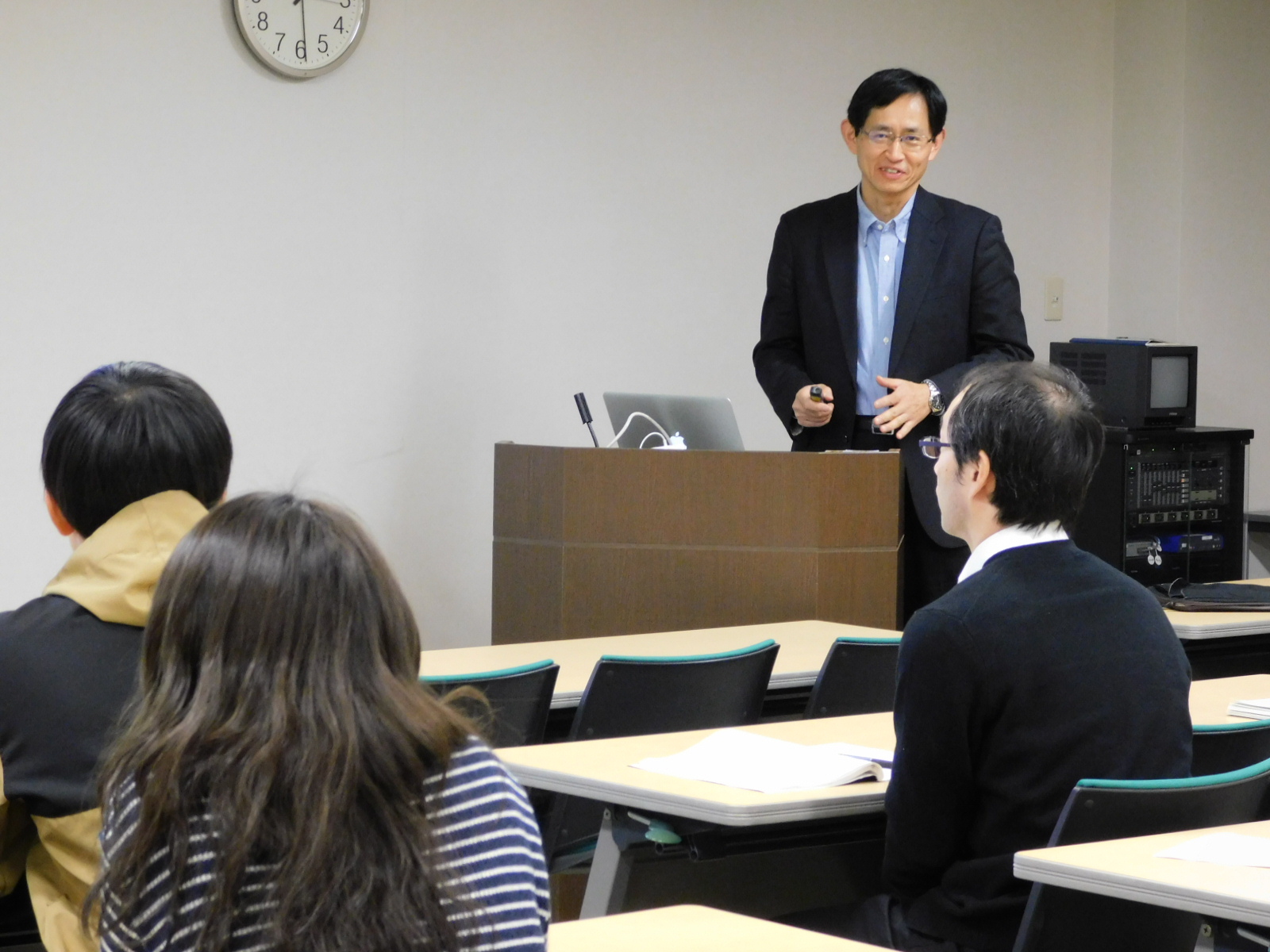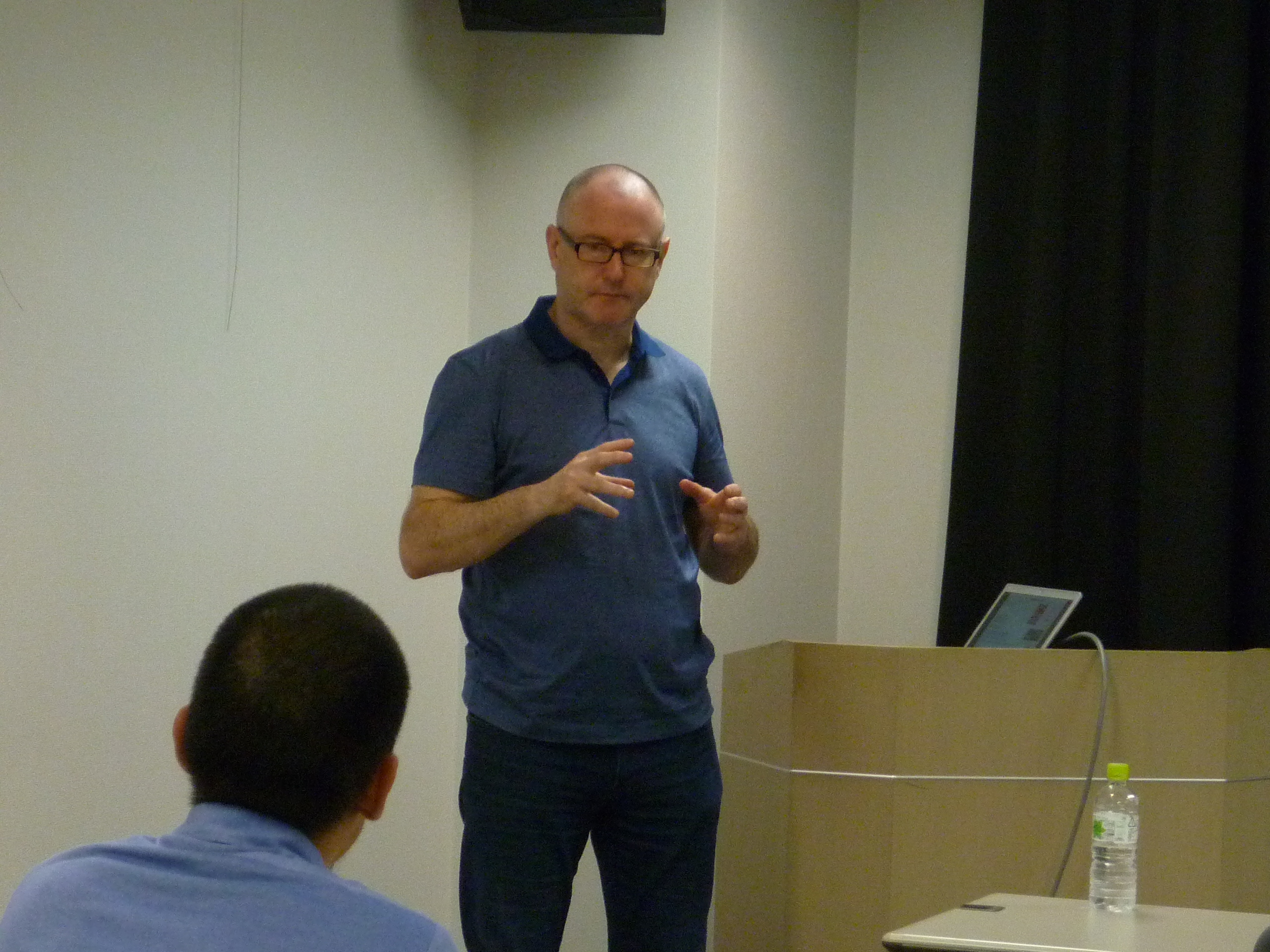Date: 2020/1/22 PM6:00~
Speaker:西村明幸 先生 (九州大学大学院薬学研究院創薬育薬研究施設統括室)
Title:活性イオウによる心筋ミトコンドリア品質制御と心臓恒常性維持・変容機構の解明
病的な心臓リモデリングの進行に伴う心筋細胞の早期老化は心機能低下の主要な要因である。私たちは、ミトコンドリア分裂因子Drp1の活性化を介したミトコンドリアの過分裂が心筋早期老化の引き金となることを見出した。Drp1の新規活性化因子としてアクチン結合蛋白質Filamin
Aを同定し、疾患特異的なDrp1-Filamin A複合体形成が心筋早期老化を誘導すること、薬理的にこの複合体形成を阻害することで心不全の進行を抑制できることを明らかにした。また、活性イオウによるDrp1の硫黄付加(ポリイオウ化)修飾がFilamin
Aとの複合体形成を制御すること、Drp1のポリイオウ化状態が心疾患リスクに関与することを見出した。本セミナーでは、心臓の恒常性における活性イオウを介した心筋ミトコンドリア品質制御の重要性について紹介する。 |
|
Date: 2019/12/4 PM1:00~2:30
Speaker:Ken Suzuki, Professor (Translational Cardiovascular Therapeutics, William Harvey Research Institute,
Barts and The London School of Medicine and Dentistry, Queen Mary University
of London, UK)
Title:多様なるマクロファージ;新たな治療法の開発に向けて
近年マクロファージに関する理解が大きく進展しています。特に組織修復能を持つマクロファージが臓器特異的に在住あるいは集積し、様々な疾患の病因及び治癒において主要な役割を果たすことが明らかになり、これらの知見が新たな治療法開発につながることが期待されています。我々の研究室でもこの細胞を応用した心不全に対する新規治療法、さらに術後癒着予防療法を検討してきましたので、本セミナーではその試みについて紹介致します。
|
 |
Date: 2019/9/12 PM4:00~5:30
Speaker:Professor Philip Eaton(William Harvey Research Institute, Queen Mary University of London)
Title:Redox sensing and signalling in the cardiovascular system
Oxidants, which can be produced in cells and tissues, have been causatively
implicated in the pathogenesis of most major diseases. Whilst this paradigm
is still prevalent, and oxidants may indeed play important roles in the
disease etiology, it is now also understood that they can also serve as
regulatory entities that are important for the maintenance of homeostasis
during health and disease. Oxidants can be sensed and transduced into a
biological event via their reaction with select cysteine thiol side chains
on some proteins. Such reactions can result in oxidative post-translational
modifications of proteins that in some cases alter their function to enable
adaptation and homeostasis. Protein kinase A (PKA) and protein kinase G
(PKG) are cyclic nucleotide-dependent kinases, being activated by the second
messenger cAMP or cGMP respectively. The Regulatory RIasubunit of PKA and
the PKG Iaisoform are each able to form homo interprotein disulfides in
response to increased oxidants. These oxidative modifications alter the
function of PKA and PKG and have a complex interrelationship with their
cyclic nucleotide-dependent regulation. Comparing PKA C17S RIaor C42S PKG
Iatransgenic knock-in mice, engineered so that the they cannot form the
interprotein disulfides, to wild-type controls has allowed the importance
of these oxidative modifications to be defined in terms of cardiovascular
function.
|
 |
|
